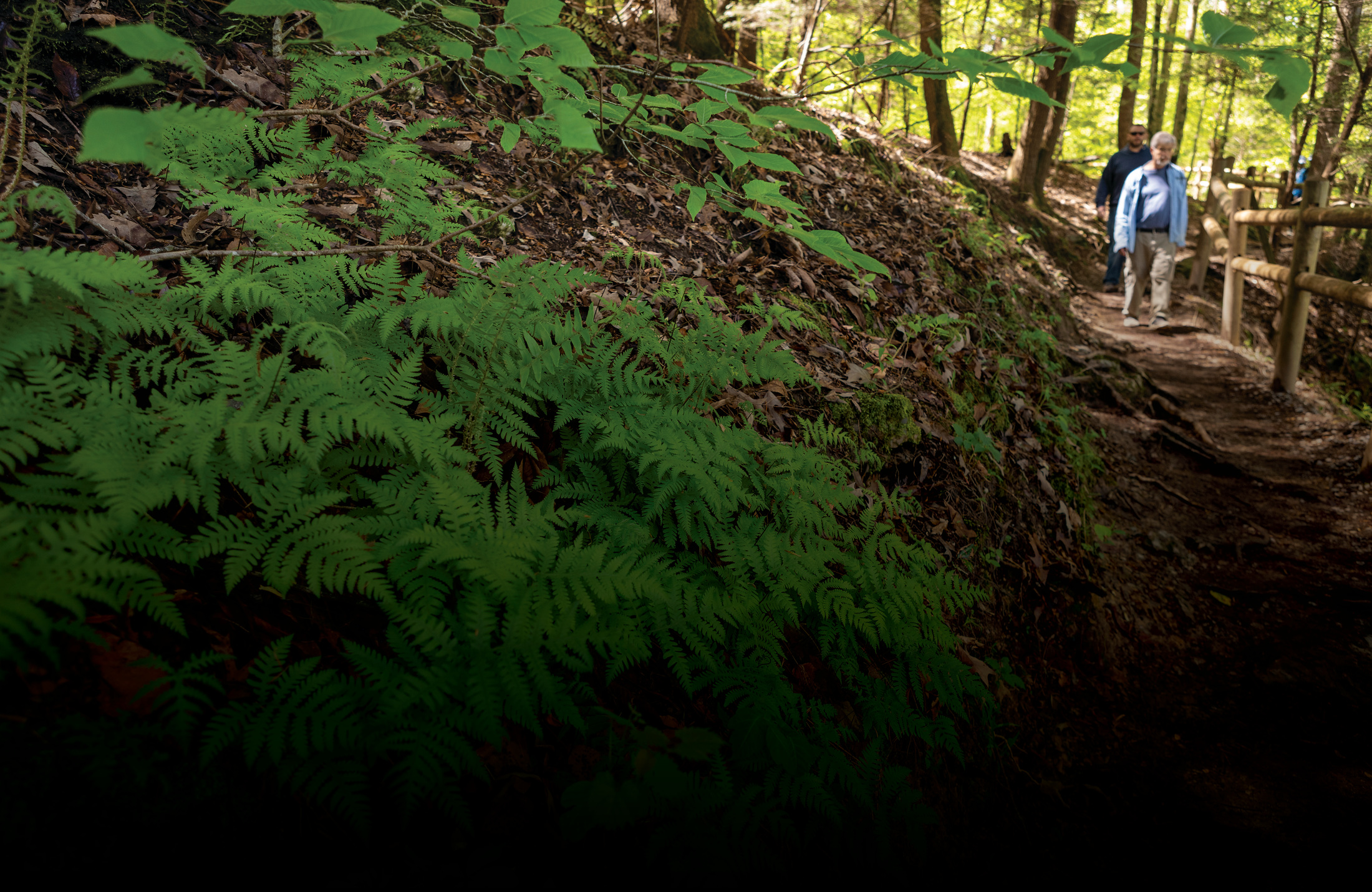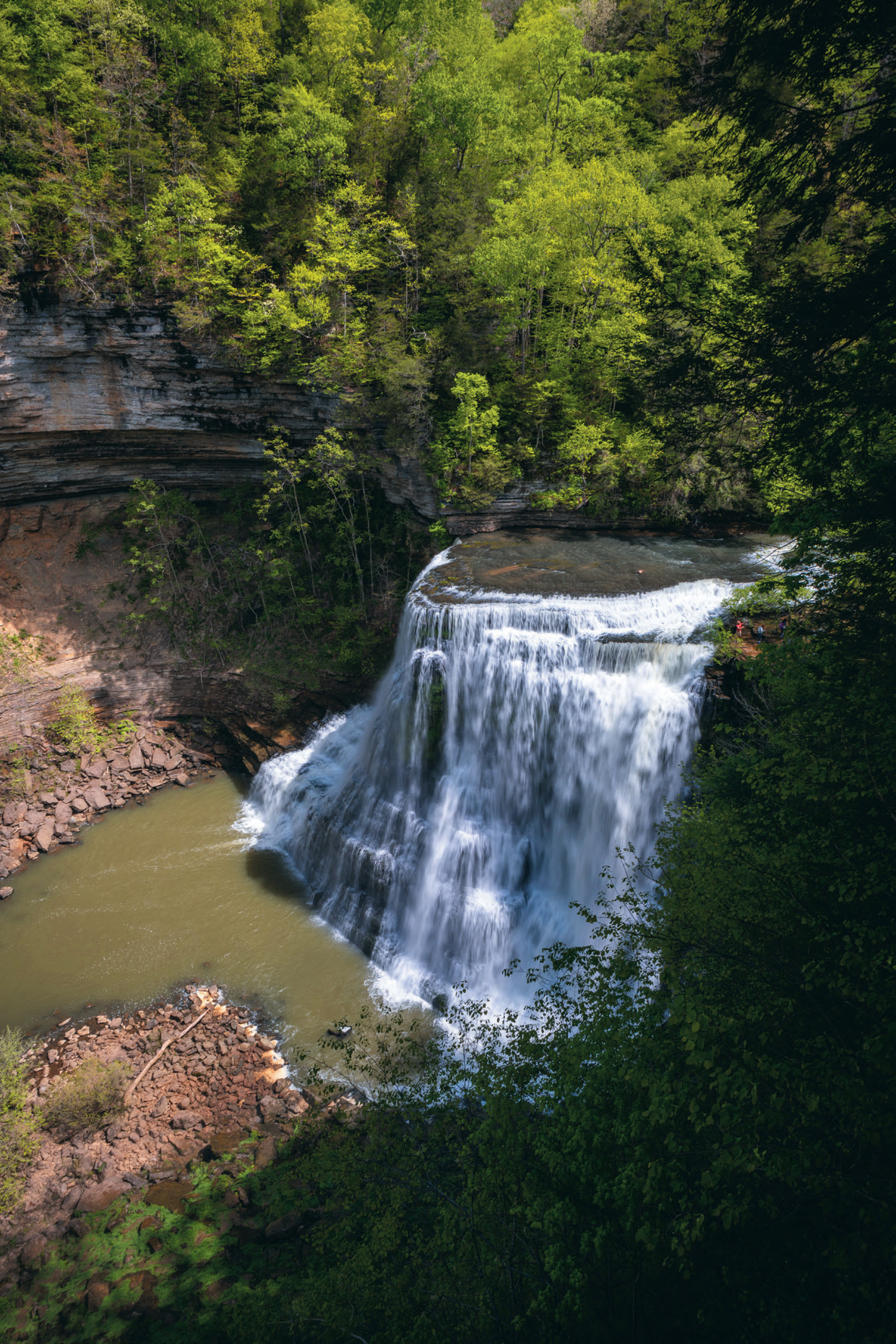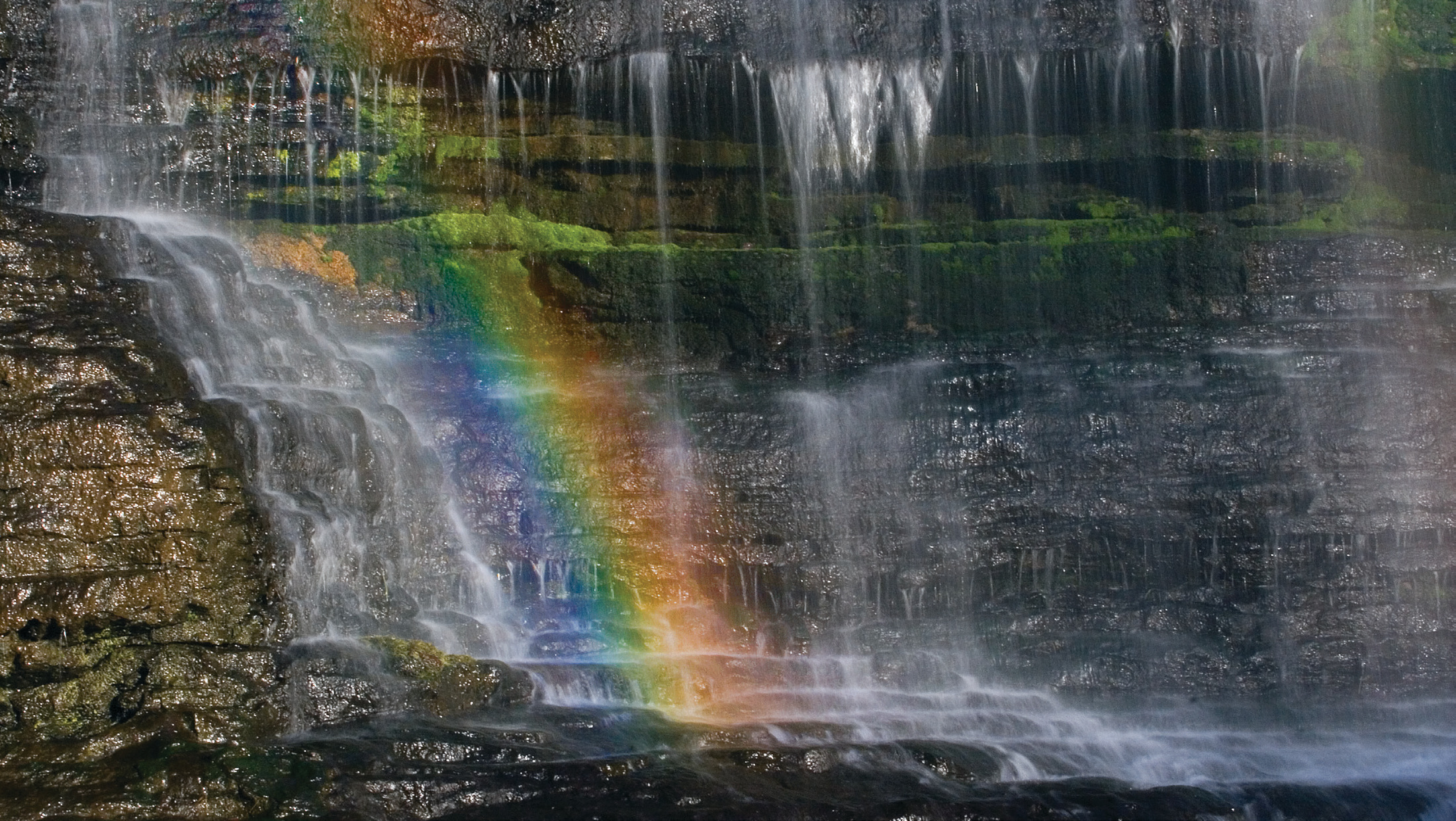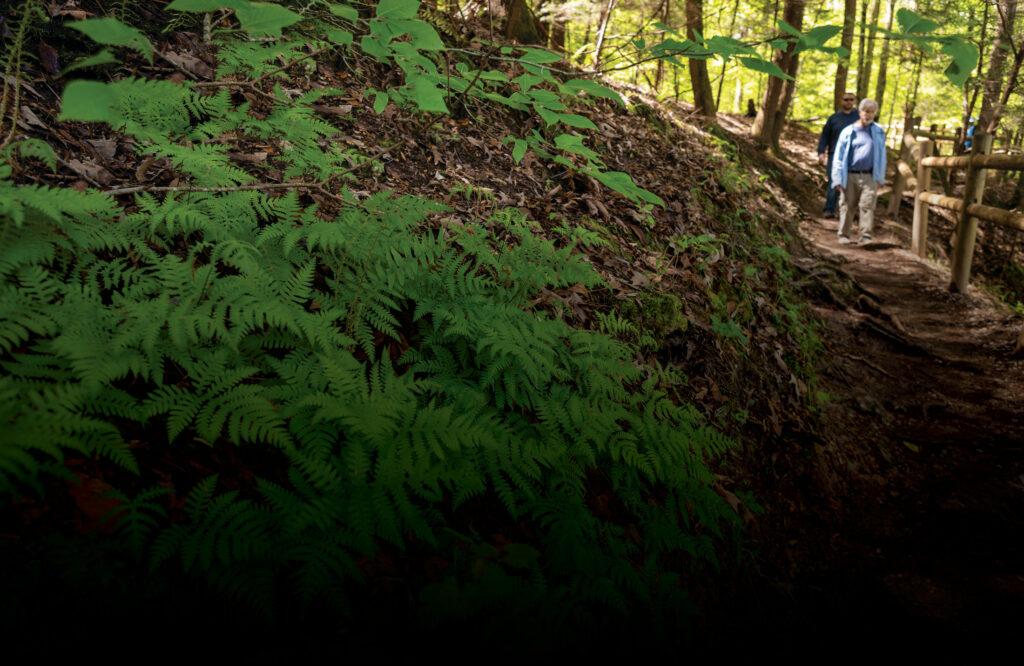 When Nathaniel Garrison, park manager at Burgess Falls State Park, describes being on the Ridgetop Trail and watching storms roll in, it feels like the pinnacle of viewing Mother Nature at work.
When Nathaniel Garrison, park manager at Burgess Falls State Park, describes being on the Ridgetop Trail and watching storms roll in, it feels like the pinnacle of viewing Mother Nature at work.
“Looking straight down the river canyon, I could see lightning hitting pine trees in the distance,” Garrison says. “It provides such a sense of place, and the awe of nature takes the cake.”
Garrison has been Burgess Falls State Park’s manager for a bit less than a year, but he’s not new to working in Tennessee’s state parks. In addition to being a ranger at Burgess Falls, he’s spent time as a seasonal worker or ranger at other parks such as Henry Horton and Rock Island after earning a degree in anthropology from the University of Tennessee, Knoxville.
While other parks have offerings catering to campers, golfers, horseback riders, boaters and more, the focus at Burgess Falls is very much on nature itself. As you might expect from a park with “falls” in its name, the waterfalls in the park are the main attractions for the many visitors who arrive at this busy park each year.
Four waterfalls along the appropriately named Falling Water River cascade from a height of 250 feet, the last one with the most dramatic drop of 136 feet into the gorge below. Once, visitors could take a staircase down to the bottom of the falls, but damage to that staircase required its removal. So now access to the bottom of the falls is only available by boat from outside the park.
Beyond the river
While the spectacular falls are the main draws, the park shines in other natural ways as well. For those able to hike at least moderately strenuous trails, there are some beautiful views to behold. The River Trail/Service Road Loop takes you past the park’s waterfalls but also provides opportunities to see and photograph land-based beauty such as trees, wildflowers and the critters that make their home here.
The Ridge Top Trail is where Garrison had his awe-inspiring moment. The views down the canyon are indeed worthy of that awe.
Not requiring a hike are the lovely views of the native butterfly garden located adjacent to the parking lot. Also popular are birding, fishing and picnicking at the park’s picnic areas and covered pavilion.
Busy, busy, busy
Burgess Falls, located near Sparta, is easily accessible to a large percentage of the state’s population — being centrally situated among Nashville, Knoxville and Chattanooga and only four miles from Interstate 40. This ease of access, however, leads to large numbers of visitors in a park that only has about 100 parking spaces. In fact, if you visit the park’s website, you’ll see a pop-up window that shares three important facts about the park that visitors need to know before visiting: There is no access to the bottom of the falls from the park; there is no designated swim area in the park; and if the lot is full, there’s no parking on the roadsides or nondesignated areas.

While Garrison was already seeing steady growth in park visitation prior to 2020, he says the pandemic’s result of sending people outdoors pushed that growth forward by an estimated five years.
“When we’re full, we stay full for hours, especially on weekends,” he says. “Try to come during the week or in the early morning.”
Investment in Tennessee state parks is going to be bringing changes to Burgess Falls that will help give all these visitors a richer experience. By the end of 2025, the park will have a new visitor and interpretive center with a front porch and an audio-visual/teaching room.
Window Cliffs State Natural Area
Though it is a separate entity not connected to the state park physically, Window Cliffs State Natural Area, which opened in 2017, is managed by Burgess Falls State Park staff.
The natural area is 275 acres, the focus of which is “a prominent geological clifftop feature that consists of a very narrow, elongated ridge that lies in the neck of an incised meander of Cane Creek,” according to the natural area’s website.
Hiking here is on the difficult and strenuous end of the scale, so it’s important to plan ahead and know your physical limits. Also imperative is knowing the weather forecast because the trail can be closed due to flooding. It has 18 creek crossings that can become difficult and dangerous, even impassible, when the water is high. None of these crossings have bridges, only cables and rocks. The water level can rise very quickly.

It is suggested that you plan to spend two and a half to three hours to complete the 5.4-mile round trip and to head back an hour and a half before sunset.
Leave only footprints
Garrison reiterated the importance of the leave-no-trace principle when visiting the park. He noted that the difference between areas where foot traffic has impacted the soil and the areas fenced off to protect the plant life is very noticeable.
“If you step off the trail, it compacts the soil, and it becomes devoid of plant life,” he says. “We’re not trying to be the fun police, but human visitation does have an impact on the local ecosystem.”
The more people who stick to the marked trails and take care of the park, the more who will be able to enjoy being outside in this free resource.

Burgess Falls State Park
For more information, visit tnstateparks.com/parks/burgess-falls or call the park office at 931-432-5312.




